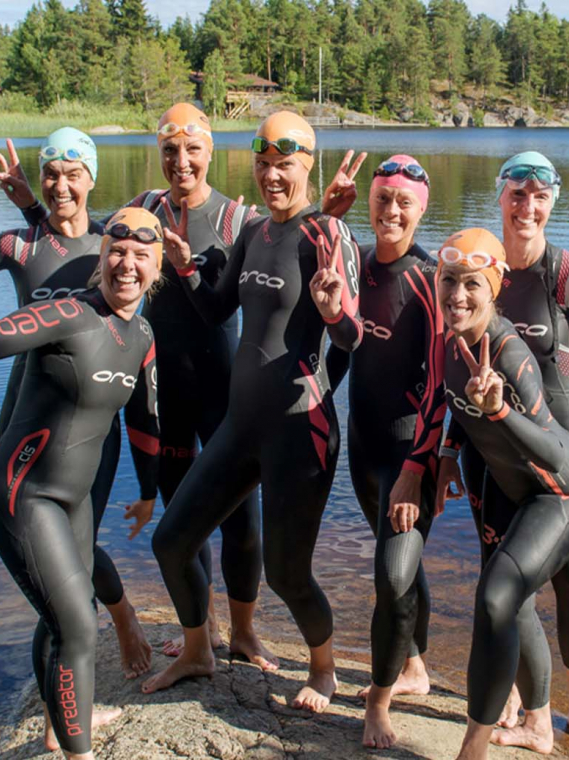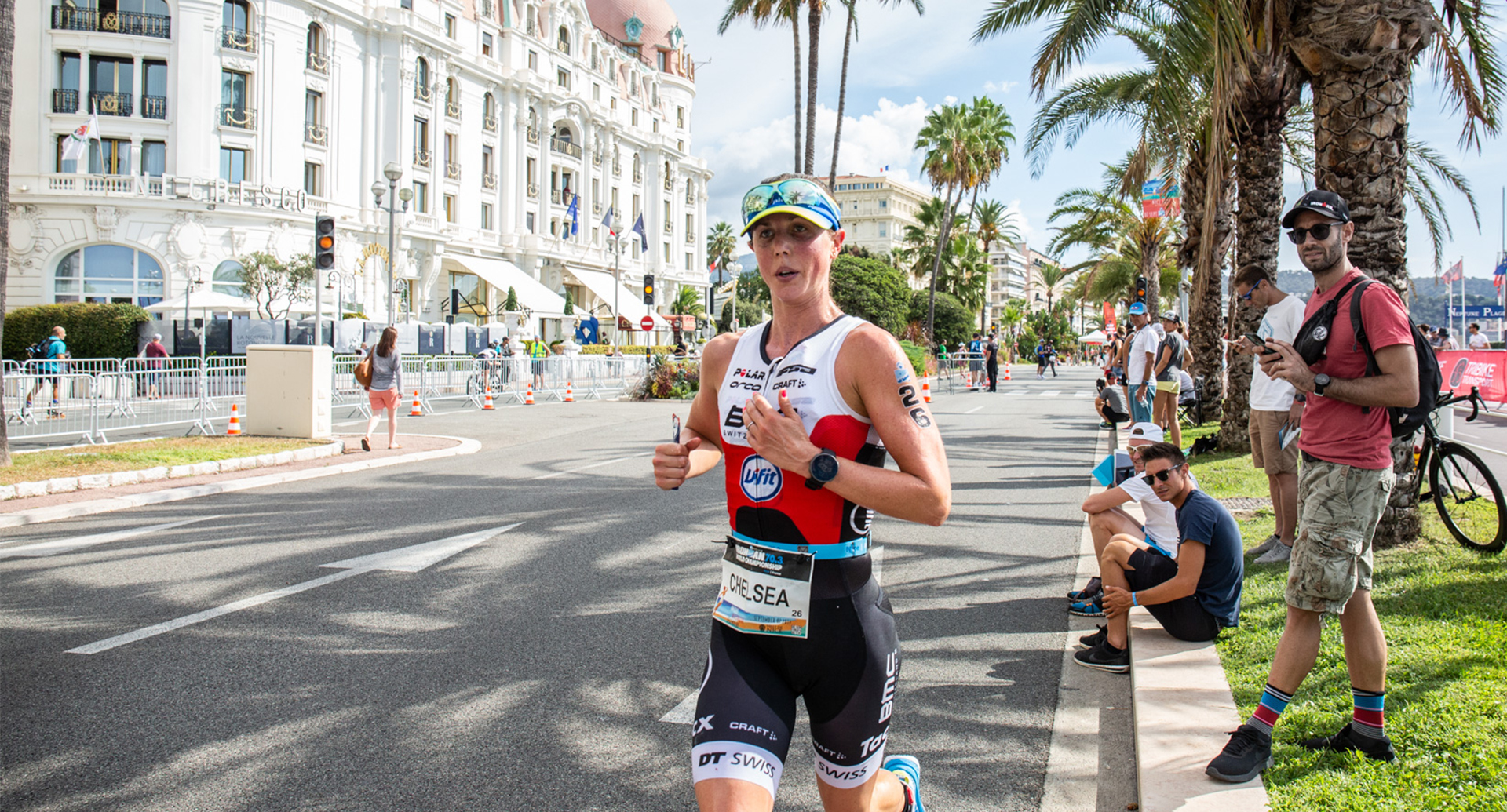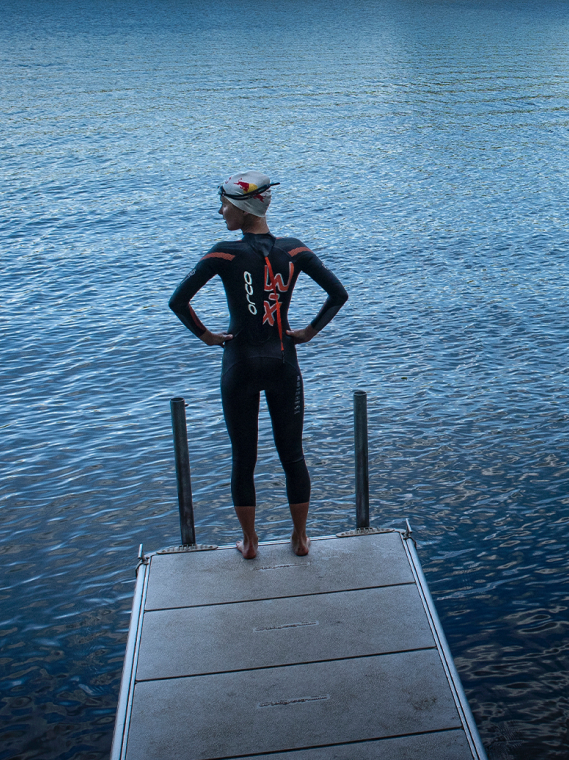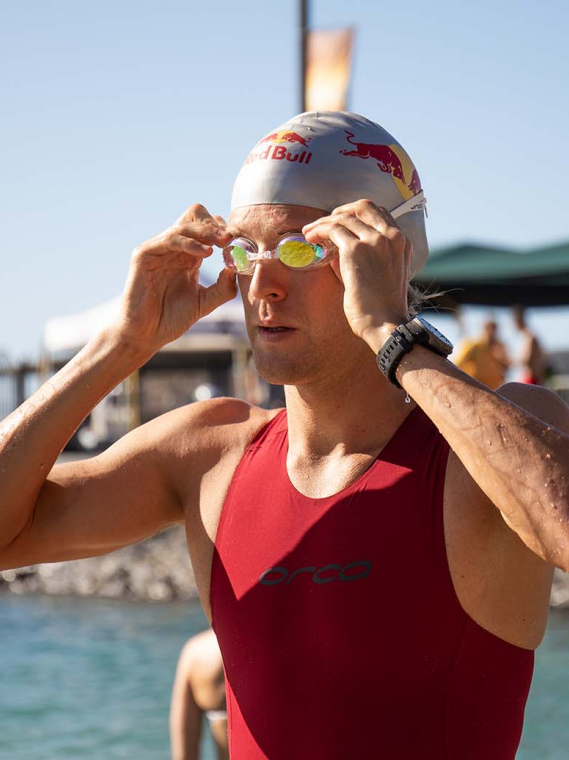
A Wetsuit for Every Swimmer: Introducing our Wetsuit Matrix
New & Noteworthy
23. März 2016
We know that not all swimmers are alike, so within our range we offer wetsuits to suit every swim style and budget so that every athlete's individ...
Always thought you'd like to try a triathlon? Relative newcomer to triathlon, Miriam Garcia shares what helped her to get over her fears and excuses and compete in her first triathlon. It's become a lifestyle for Miriam - it can be for you too!

For a long time in my life, I found myself repeating the same thing over and over again: I’d love to...
But then I realised that all those excuses for not doing things were really only because of fear and insecurity.
Because breaking barriers takes courage, determination and hard work. And people often don’t choose that path, even if they know that the end result will be far better than if they’d just sat around and done nothing.
We spend so much of our lives doing things we have to do and not things we want to do. We work long hours, often in jobs we don’t like, with stress, nerves... And then there are all the other things in our lives, like our family or our home.
Don’t you think it’s worth spending a bit more time on yourself? Experiencing something new, that’ll help you be a happier person?
Something that really worked for me, in the days before I'd even started to do any running, was someone persuading me to try. It’s always easier if someone else makes the decision and says “Hey, why don’t you try a triathlon? Let’s do it together!”
And that’s how I got started. It was the other person’s enthusiasm that led me to try a new experience. And that experience changed me so much that triathlon is now part of my lifestyle.

If you’re still making excuses that stop you from taking the plunge, I’d give you this advice. Even though you don’t know me, trust me when I say that you should at least give it a try.
So these are the tips I’d give you. First of all:
1. ENDURANCE TEST
Health comes first.
I’m the kind of person who thinks an endurance test should be an essential requirement for taking part in any race, whatever your level as an athlete.
It tests your current condition and your limits as you carry out physical exercise. The results allow any possible risks or disorders to be detected, and you can find out what it’s best for you to do, or not to do.
2. PLAN AHEAD
You can’t get ready for the race in a week. Planning sufficiently in advance will help you prepare for it both physically and mentally.
3. CHOOSE THE RIGHT DISTANCE FOR YOUR LEVEL
No-one's asking you to do an Ironman!
Whatever your fitness level, if you’ve never done a triathlon before I would advise you to start off with shorter distances like a SPRINT (750m swim, 20km bike and 5km run) or SUPER-SPRINT (400m swim, 10km bike, 2.5km run), to gradually get used to the three disciplines. You should start off with each one separately and then make transitions (go from one discipline to the other).

4. TRAIN WITH COMMON SENSE
Don’t go mad and train for hours on end. If you want to improve you should focus on your technique and on your swimming, biking and running skills to increase your efficiency, enhance your enjoyment of the sport and have a lower risk of injury.
But triathlon is not just a question of swimming, biking and running: you have to build specific muscles for it, so don’t forget to include that aspect in your workouts!
Having a personal trainer is also an excellent idea. He or she will give you advice and help you plan your own customised workout programme, taking important aspects into account such as your characteristics, experience, level, time availability and naturally your aims.
If you can’t afford a trainer, perhaps you have a friend or acquaintance who can give you some advice. There are also some useful tips on my friend Aitziber’s website: check out her posts on training programmes.

5. EAT AND DRINK RIGHT
A balanced diet is vital to perform well in any sport.
You should eat 5 meals a day and include carbohydrates, protein, healthy fats and vitamins in all your main meals.
Don’t forget the functions of these food groups:
- Energy: carbohydrates and fats
- Repair: proteins
- Regulation: vitamins, vegetables
- Hydration: water

6. TEST OUT YOUR KIT
Triathlon is a sport that requires an initial outlay on quality kit to ensure comfort. It’s vital for you to test it out during training to break it in and avoid any unpleasant surprises on the day of the race.
Specific triathlon gear:
- Wetsuit: This is basically to protect you from the cold, although swimming in a wetsuit changes some features affecting your position in the water, your swimming style and your performance, notably improving it if you’re not a skilled swimmer. You can find some recommendations for choosing a wetsuit in this previous post
- Tri suit: The good thing about a tri suit is that you can do all three parts of the triathlon without having to get changed. Also, today’s suits can be customised to suit your preferences, which will enhance your comfort even further.
- Goggles: The swim can be the most challenging part of a triathlon, and I recommend you take it easy and avoid any potentially stressful situations. One such situation could be not having suitable goggles. Make sure yours provide good visibility and don’t fog up. I personally use Orca's KILLA 180º GOGGLES, which I love.

7. ENJOY IT
The most important thing is for it to be fun. That’s the real aim of doing triathlon. The race lasts a day but the challenge starts long before that. Enjoy the preparation and all it involves. Reward yourself for each milestone you reach on the way, even if they’re not major achievements.
Don’t compare yourself to others. Don’t even compare yourself to your own performance in the past. Focus on the present and adapt your targets accordingly.
If you regularly take stock throughout the process you’ll see how you’ve advanced, and that’ll help boost your motivation.
And remember it’s your attitude that’ll get you to the finishing line. Self-confidence has a huge influence on our well-being, personal satisfaction and performance.
Let’s GO!!

IT’S NEVER TOO LATE TO START.

23. März 2016
We know that not all swimmers are alike, so within our range we offer wetsuits to suit every swim style and budget so that every athlete's individ...

16. Februar 2016
We want to help you to achieve the exciting challenge of competing in a triathlon in 2016. Together with experienced trainer Aitzi Santos, we've creat...

25. November 2015
Our new Killa goggle collection offers a complete solution for triathletes. Using the latest in TPE rubber injected technology, our goggles raise the...